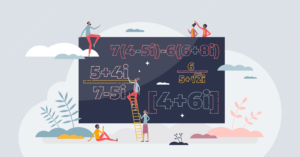Introduction
Work Integrated Learning (WIL) courses provide students with the opportunity to apply their theoretical knowledge in real-world contexts, offering a valuable learning experience that can improve their employability (Jackson, 2015). Reflective Learning Journals (RLJs) are an essential tool for enhancing the learning outcomes of these courses, as they encourage students to critically reflect on their experiences and identify areas for personal and professional growth (Boud, Keogh, & Walker, 1985).
The Benefits of Reflective Learning Journals
Enhancing Self-awareness and Personal Growth
RLJs promote self-awareness and personal growth by encouraging students to reflect on their experiences, identify their strengths and weaknesses, and develop strategies for improvement (Moon, 1999). In the context of WIL courses, this process can help students to better understand their role in the workplace and to develop the skills necessary for success in their chosen field (Billett, 2009). Furthermore, this self-awareness can lead to increased confidence, motivation, and ultimately, job satisfaction (Dacre Pool & Qualter, 2013).
Developing Critical Thinking Skills
Engaging in reflective practice through RLJs can help students develop critical thinking skills by prompting them to analyze their experiences, identify problems, and evaluate potential solutions (Dewey, 1933). This process is especially valuable in WIL courses, as it allows students to connect their academic learning with real-world experiences and identify areas where their theoretical knowledge may need to be expanded or adapted (Smith, 2011). By fostering critical thinking skills, RLJs can contribute to students’ overall academic success and enhance their ability to solve complex problems in the workplace (Savery, 2006).
Encouraging Lifelong Learning
RLJs foster a commitment to lifelong learning by encouraging students to continually evaluate their learning experiences and identify areas for future development (Kolb, 1984). This is particularly important in the context of WIL courses, as it helps students to adapt to the rapidly changing demands of the workforce and to remain competitive in their chosen field (Trede, 2012). Additionally, a commitment to lifelong learning can lead to increased adaptability, resilience, and career success (Candy, 2000).
Improving Communication Skills
The process of writing RLJs can help students to improve their written communication skills by encouraging them to articulate their thoughts and ideas clearly and concisely (Moon, 2004). This skill is essential for success in both academic and professional contexts and can be further developed through the use of collaborative RLJs, where students share their reflections with their peers or supervisors (Ryan, 2013). Moreover, the development of effective communication skills can lead to improved teamwork, leadership, and conflict-resolution abilities in the workplace (Andrews & Higson, 2008).
Evidence from Academic Literature
Numerous studies have demonstrated the effectiveness of RLJs in promoting the aforementioned benefits in WIL courses:
Enhancing Self-awareness and Personal Growth
Mann, Gordon, and MacLeod (2009) conducted a systematic review of the literature on reflective practice in healthcare professions and found that reflective learning was associated with improvements in self-awareness, personal growth, and professional development. Similarly, Smith and Trede (2013) explored the impact of reflective practice on physiotherapy students’ self-awareness and professional identity during a WIL course, concluding that RLJs were an effective tool for fostering personal and professional growth.
Developing Critical Thinking Skills
Facione (1990) highlighted the importance of critical thinking skills in higher education and identified reflective practice as a key component of their development. In a study of nursing students, Tsingos, Bosnic-Anticevich, and Smith (2015) found that the use of RLJs in WIL courses significantly improved students’ critical thinking skills, leading to better problem-solving abilities and clinical decision-making.
Encouraging Lifelong Learning
Kember et al. (2000) demonstrated a strong link between reflective practice and lifelong learning, with students who engaged in reflective learning showing a greater commitment to continuous professional development. Similarly, Williams, Wessel, and Gemus (2002) found that RLJs helped nursing students develop a commitment to lifelong learning by prompting them to continually evaluate their learning experiences and identify areas for future development.
Improving Communication Skills
Ryan (2011) explored the impact of RLJs on communication skills development in healthcare students, finding that students who participated in reflective writing exercises exhibited significant improvements in their written communication abilities. Furthermore, in a study by Larrivee (2008), pre-service teachers who engaged in reflective practice through the use of journals demonstrated improved communication skills, as well as an increased ability to reflect on their teaching practices and make informed decisions.
Recommendations for Implementation
To maximize the benefits of RLJs in WIL courses, the following recommendations should be considered:
Provide Clear Guidelines and Expectations
Provide clear guidelines and expectations for the content and format of RLJs to ensure that students understand the purpose and goals of reflective practice (Boud & Walker, 1998). This may include offering examples of high-quality reflections, outlining the required structure and format, and providing a list of suggested topics for reflection.
Offer Regular Feedback
Offer regular feedback on students’ reflections to facilitate ongoing learning and improvement (McDrury & Alterio, 2003). This can be achieved through individual feedback sessions or group discussions, allowing students to gain insights from their peers and instructors and to identify areas for growth.
Encourage Peer-to-Peer Sharing
Encourage peer-to-peer sharing of reflections to promote collaborative learning and foster a supportive learning environment (Bringle & Hatcher, 1999). This can be facilitated through group discussions, online discussion boards, or peer review exercises.
Integrate RLJs into the Assessment Process
Integrate RLJs into the assessment process to ensure that students are held accountable for their reflective practice and that their efforts are recognized and rewarded (Ryan & Ryan, 2013). This may involve incorporating RLJs as a component of students’ final grades or offering incentives such as bonus marks or recognition for exceptional reflections.
Conclusion
The integration of Reflective Learning Journals in Work Integrated Learning courses at the university level offers numerous benefits for students, including enhanced self-awareness, improved critical thinking skills, a commitment to lifelong learning, and better communication skills. By implementing RLJs in WIL courses, educators can provide students with a valuable tool for personal and professional growth, ultimately contributing to their success in the workforce.
Case StudY
The following case studies provide real-world examples of how scaffolded assessment and consistent revisiting of assessment items can be implemented in different university courses to improve academic outcomes. By exploring the context, implementation, and outcomes of these interventions, these case studies demonstrate the versatility and effectiveness of scaffolded assessment in enhancing student learning.
Case Study 1: Enhancing Critical Thinking Skills through Scaffolded Assessment in a Political Science Course
Context
A mid-sized university sought to improve students’ critical thinking skills in an introductory political science course. The course typically consisted of lectures, readings, and three major assessment items, including a midterm exam, a research paper, and a final exam. The educators recognized the need to engage students more actively in the learning process and provide them with structured guidance and support to enhance their critical thinking skills.
Implementation
The educators redesigned the course using scaffolded assessment techniques. They broke down the research paper assignment into several smaller tasks, each building on the previous one. The new assessment structure included the following components:
-
Topic Selection and Rationale: Students submitted a brief statement explaining their chosen topic and its relevance to the course material.
-
Annotated Bibliography: Students developed an annotated bibliography of relevant academic sources, summarizing each source’s main arguments and evaluating its credibility.
-
Thesis Statement and Outline: Students formulated a clear thesis statement and created an outline for their research paper, including the main points and supporting evidence.
-
Draft Submission: Students submitted a complete draft of their research paper for instructor feedback.
-
Final Submission: Students revised their drafts based on feedback and submitted the final version of their research paper.
Throughout the course, students consistently revisited each component, incorporating feedback from the instructor and peers. They were encouraged to reflect on their progress and adjust their strategies accordingly.
Outcomes
After implementing scaffolded assessment, the educators observed a significant improvement in students’ critical thinking skills. Students demonstrated a deeper understanding of complex political concepts, greater ability to evaluate and synthesize academic sources, and enhanced argumentation skills in their research papers. Course evaluations indicated higher levels of student satisfaction and engagement, with many students expressing appreciation for the structured guidance provided throughout the research paper process.
Case Study 2: Improving Problem-Solving Abilities in a Physics Course through Scaffolded Assessment and Consistent Revisiting of Assessment Items
Context
A large university aimed to enhance students’ problem-solving abilities in an introductory physics course. The course traditionally relied on lectures and problem sets, with three exams to assess students’ understanding of the material. The educators recognized the potential benefits of scaffolded assessment and consistent revisiting of assessment items in promoting deeper learning and improved problem-solving abilities.
Implementation
The educators redesigned the course to incorporate scaffolded assessment techniques and emphasize the consistent revisiting of assessment items. They introduced the following changes:
-
Weekly Quizzes: Students completed short quizzes each week, testing their understanding of the material covered in the lectures and problem sets. These quizzes provided immediate feedback and enabled students to identify areas where they needed additional practice.
-
Collaborative Problem-Solving Sessions: Students participated in weekly collaborative problem-solving sessions, working in small groups to solve complex physics problems with the support of a teaching assistant. These sessions allowed students to build on their understanding, refine their problem-solving strategies, and apply their knowledge to new contexts.
-
Cumulative Exams: The educators redesigned the exams to include questions that required students to revisit and apply concepts from previous weeks, encouraging them to consistently review and reinforce their understanding.
Outcomes
The implementation of scaffolded assessment and consistent revisiting of assessment items led to significant improvements in students’ problem-solving abilities. They demonstrated a greater ability to apply physics concepts to novel situations and showed increased confidence in their problem-solving skills. Course evaluations indicated that students found the collaborative problem-solving sessions particularly valuable, as they provided opportunities for peer learning and personalized support. Overall, the redesigned course resulted in higher levels of student engagement, satisfaction, and academic achievement.
References
Bandura, A. (1997). Self-efficacy: The exercise of control. W H Freeman/Times Books/ Henry Holt & Co.
Black, P., & Wiliam, D. (1998). Assessment and classroom learning. Assessment in Education: Principles, Policy & Practice, 5(1), 7-74.
Bovill, C., Cook-Sather, A., & Felten, P. (2011). Students as co-creators of teaching approaches, course design, and curricula: implications for academic developers. International Journal for Academic Development, 16(2), 133-145.
Bransford, J. D., Brown, A. L., & Cocking, R. R. (2000). How people learn: Brain, mind, experience, and school. National Academy Press.
Butler, A. C., Karpicke, J. D., & Roediger, H. L. (2007). The effect of type and timing of feedback on learning from multiple-choice tests. Journal of Experimental Psychology: Applied, 13(4), 273-281.
Gijbels, D., Dochy, F., Van den Bossche, P., & Segers, M. (2005). Effects of problem-based learning: A meta-analysis from the angle of assessment. Review of Educational Research, 75(1), 27-61.
Hannafin, M. J., Land, S. M., & Oliver, K. (1999). Open learning environments: Foundations, methods, and models. In C. M. Reigeluth (Ed.), Instructional-design theories and models: A new paradigm of instructional theory (Vol. 2, pp. 115-140). Lawrence Erlbaum Associates Publishers.
Hmelo-Silver, C. E., Duncan, R. G., & Chinn, C. A. (2007). Scaffolding and achievement in problem-based and inquiry learning: A response to Kirschner, Sweller, and Clark (2006). Educational Psychologist, 42(2), 99-107.
Karpicke, J. D., & Roediger, H. L. (2008). The critical importance of retrieval for learning. Science, 319(5865), 966-968.
King, A. (1991). Effects of training in strategic questioning on children’s problem-solving performance. Journal of Educational Psychology, 83(3), 307-317.
Nicol, D. J., & Macfarlane-Dick, D. (2006). Formative assessment and self-regulated learning: A model and seven principles of good feedback practice. Studies in Higher Education, 31(2), 199-218.
Pea, R. D. (2004). The social and technological dimensions of scaffolding and related theoretical concepts for learning, education, and human activity. Journal of the Learning Sciences, 13(3), 423-451.
Pintrich, P. R. (2002). The role of metacognitive knowledge in learning, teaching, and assessing. Theory into Practice, 41(4), 219-225.
Reiser, B. J., Tabak, I., Sandoval, W. A., Smith, B. K., Steinmuller, F., & Leone, A. J. (2001). BGuILE: Strategic and conceptual scaffolds for scientific inquiry in biology classrooms. In S. M. Carver & D. Klahr (Eds.), Cognition and instruction: Twenty-five years of progress (pp. 263-305). Lawrence Erlbaum Associates Publishers.
Roediger, H. L., & Karpicke, J. D. (2006). Test-enhanced learning: Taking memory tests improves long-term retention. Psychological Science, 17(3), 249-255.
Vygotsky, L. S. (1978). Mind in society: The development of higher psychological processes. Harvard University Press.




